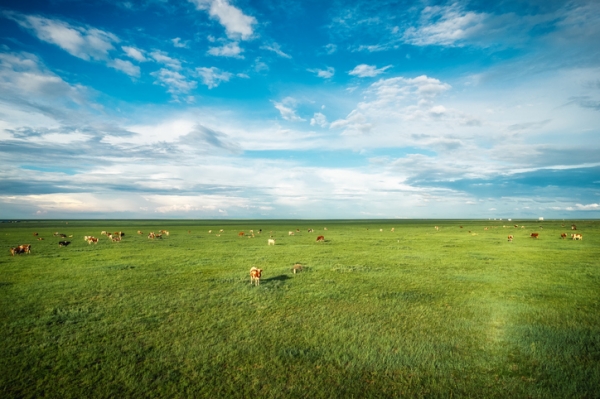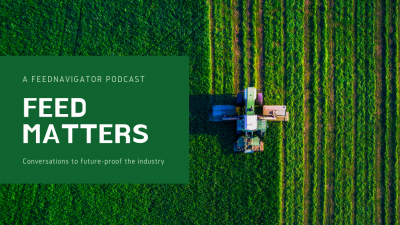Can cows flip the climate narrative?

The Archbold–Alltech Alliance, which began in 2019, brought together scientists from two different disciplines — ecologists from Archbold and ruminant nutritionists from Alltech — to understand the impact that cattle production at Archbold’s Buck Island Ranch, a 10,500-acre ranch in Lake Placid, Florida, has on the ecosystem and the ability to sequester carbon.
The findings of their work indicate that grazing ruminant animals on land benefits the environment and improves carbon cycling.
The partners maintain that their tie-up has discovered a deeper understanding of the grazing-cattle carbon cycle, one that is not solely focused on greenhouse gas (GHG) emissions from the animal but also on natural GHG emissions from the land and the sequestration of carbon in the soil.
Discussions around GHGs and global warming often center around agriculture emissions, but it is important to think beyond emissions and look at the full cycle, they contend.
Methane in grassland 'increases' when cows are absent
Asked about any unexpected or novel insights that emerged from this interdisciplinary approach, Vaughn Holder, director of ruminant research at Alltech, told us:
“The most striking finding is the discovery that beef production can be carbon negative. Meaning that the land and cattle produce fewer net emissions than is being taken up by the land. Another striking finding is that in some cases, the methane production by the land goes up when cattle are not present. This shows us that we cannot simply focus on emissions. We need to understand the whole ecosystem.”
Dr Betsey Boughton, director of agroecology at Archbold, claims its Buck Island Ranch sequesters 1,201 tons of CO2 equivalent every year and that all of the work done at that site is scalable to other parts of the world. “The narrative people have heard is that cows are bad for the environment, but grazing animals can actually change the function of grasslands. Cows are eating the grass and not allowing as much decomposition to happen on the ground. Without cows, we actually see more carbon emitted.”
Carbon flow in pasture areas
The research alliance plan to translate the findings from Buck Island Ranch to other regions around the world.
“At this time, the intent is to use the extensive array of data collection and sensors to build a model that will allow us to estimate carbon flow in grazing pasture lands. These models will then be evaluated in other systems to evaluate their robustness,” said Dr Holder.
“We can’t just look at emissions. We produce food from ecosystems, and as such, we need to understand the flow of nutrients and carbon in these ecosystems to understand the impact on food security and GHGs. We also need to understand that it is not just about carbon. Grazed lands are some of the most biodiverse lands left in the world, supporting many species that don’t live anywhere else,” he explained.
Grazed lands, particularly locations such as Buck Island Ranch in Florida, can also be extremely important for water quality and flow management, Dr Holder added.
Sensors, soil sampling
Multiple methods and techniques have been leveraged by the alliance to estimate the carbon footprint of Buck Island Ranch:
“Archbold employs an array of sensors, soil sampling and modeling methods to look at whole ranch carbon movements. Some of these include eddy-covariance flux towers for measuring ecosystem-level carbon exchange between the landscape and the atmosphere, direct soil carbon measures, satellite imaging, on-farm inputs, ecosystem level modeling, in vitro assessment of enteric emissions and total on-farm mass balance calculations. The intent is to use multiple sensors and to build models around the output of those sensors.”
Dissemination to wider public
The partners have released a six-part video series on their research findings.
“Most of our industry and the public tend to only consider emissions, but we are missing out most of the story when we don’t consider the impact of grazed lands on other parts of the carbon cycle and ecosystems. We need to understand the impact of the whole carbon cycle before drawing conclusions on the role of cattle in climate change.
“These videos address the grazing-cattle carbon cycle, the role of carbon sequestration in mitigating climate change, nutrient upcycling, utilization of food waste and byproducts — food security and GHG impacts, and the differences between methane and carbon dioxide in warming behavior."
Asked what future research initiatives are planned by the Archbold-Alltech Alliance to further explore the potential of agriculture in mitigating climate change, Dr Holder said: “The projects described here are still ongoing, and the results of these experiments will determine the future direction of research. We are looking both at in-feed and pasture-based technologies for improving plant growth and microbial sequestration, and we also hope to evaluate some in-feed methane mitigation soon.”

Alternate perspectives
A study involving researchers based in Sweden and in the Netherlands, published in November 2023, evaluated the pros and cons of relying on carbon sequestration in grasslands to offset warming effect of emissions from current ruminant systems.
The team did not aim to precisely quantify the extent to which carbon sequestration can offset emissions from ruminant systems. Instead, the authors outlined how their goal was to illustrate an approach that enhances understanding of the overall climate impact of ruminant systems, whether they contribute to GHG emissions or function as sinks.
They noted that carbon sequestration in grasslands has been proposed as a significant strategy to counterbalance GHG emissions from ruminant systems: To fully grasp the potential and constraints of this approach, they believe it is essential to recognize that soil carbon sequestration provides a benefit within a limited period, and there are inherent disparities between short- and long-lived GHGs.
Their analysis demonstrated that one ton of sequestered carbon can neutralize the radiative impact of a continuous emission equivalent to 0.99 kg of methane or 0.1 kg of nitrous oxide annually over a century. To offset the ongoing methane and nitrous oxide emissions from the global ruminant sector, approximately 135 gigatons of carbon would be required—nearly twice the current global carbon stock in managed grasslands, they maintain. This implies that for various regions, grassland carbon stocks would need to increase, ranging from 25% to 2,000%.
Consequently, relying solely on carbon sequestration in grasslands to counterbalance the warming effects of emissions from current ruminant systems is deemed impractical, said the scientists.
However, they recognized the importance of preserving and enhancing current soil organic carbon stocks in grasslands to mitigate climate change and improve overall soil health, leading to potential benefits such as enhanced water retention, biodiversity, and grassland productivity.















